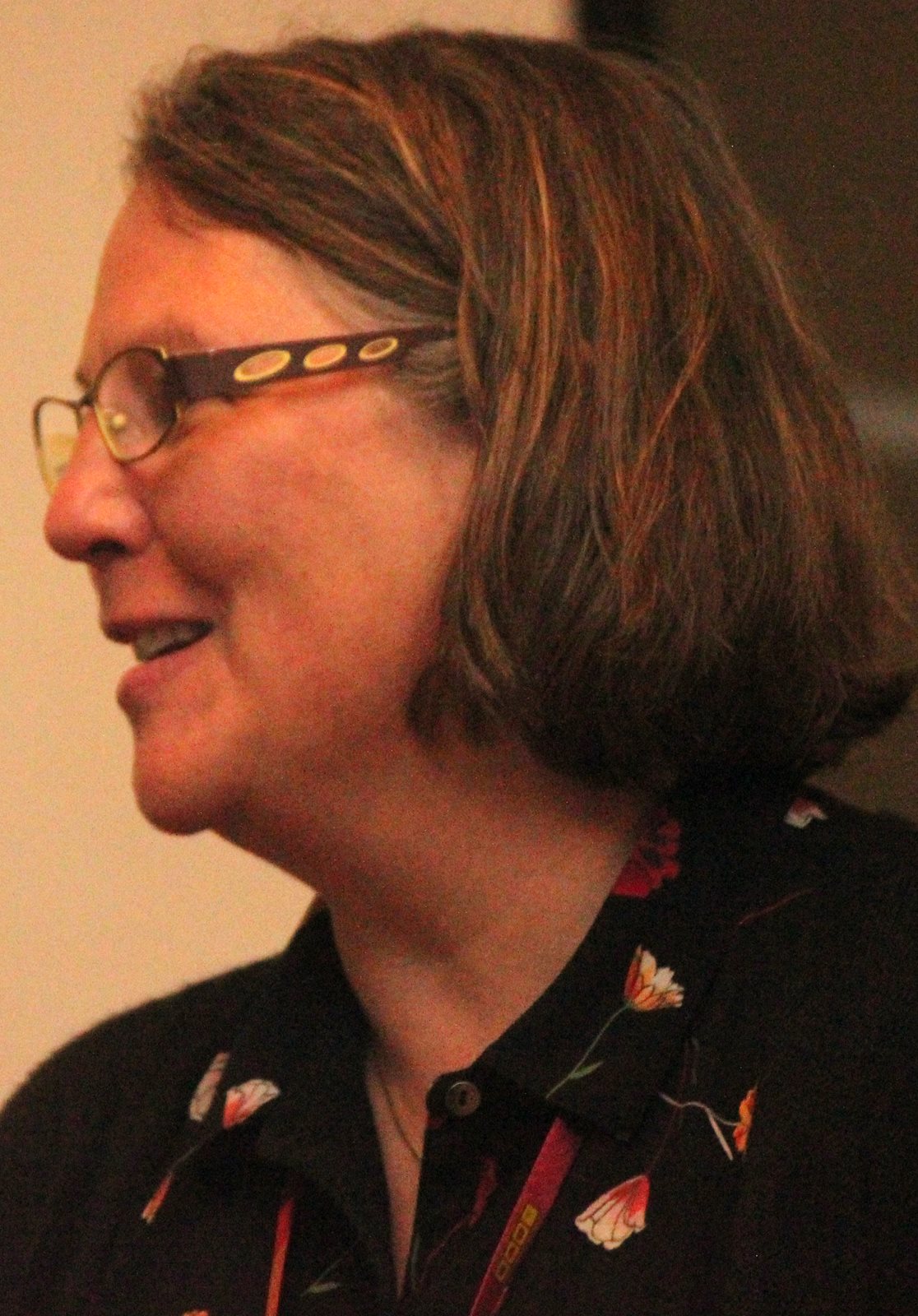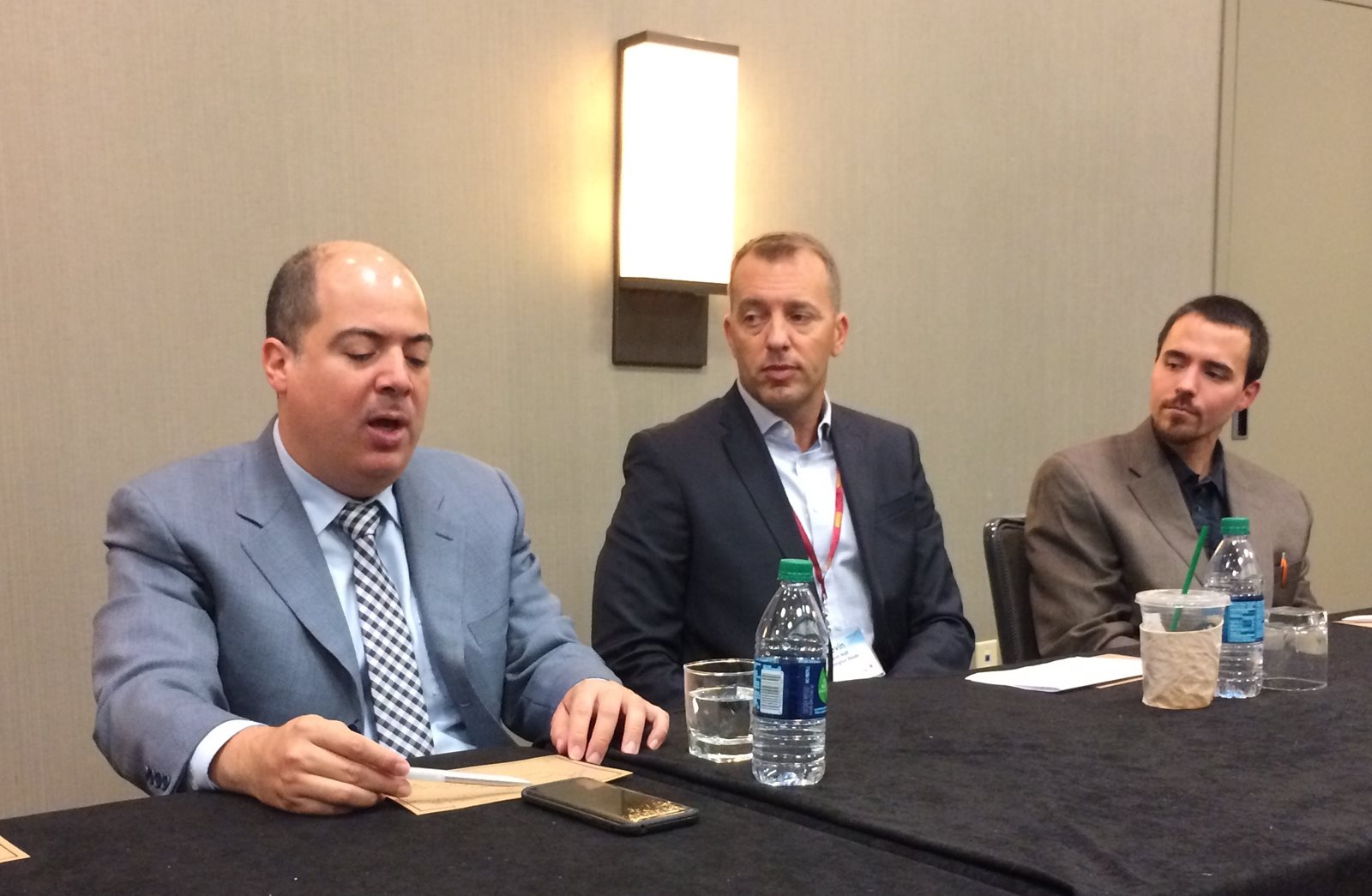Kristin Gustafson organizes two panels for the Association for Education in Journalism and Mass Communication

IAS faculty member Kristin Gustafson (photo, left, courtesy of Randy Jessee) co-organized and co-moderated two History Division teaching panels for the Association for Education in Journalism and Mass Communication convention in Washington, D.C. As the Division’s Teaching Standards Chair since 2015, Gustafson focuses on pedagogies of diversity, collaboration, community, and justice. She begins her second year of a second two-year term in this leadership position for the Division.
For the first of the two panels, Gustafson collaborated with Susan Keith, department chair and associate professor of Journalism and Media Studies at Rutgers School of Communication and Information, and the Newspaper and Online News Division (Keith and Gustafson represent both divisions) on “Contextualizing Media Credibility in 2018.” The teaching panel examined journalistic credibility from a historical perspective. It took the following into account: (1) changing notions of balance, fairness, objectivity, and credibility in journalism education and the news industry, and (2) histories of media relationships with government and other power-wielding entities. The five panelists were: A. Brad Schwartz, a doctoral student of history at Princeton University who wrote BROADCAST HYSTERIA: Orson Welles’s War of the Worlds and the Art of Fake News; Kathy Roberts Forde, associate professor in the Journalism Department at the University of Massachusetts Amherst who wrote Literary Journalism on Trial: Masson v. New Yorker and the First Amendment; Kristen Heflin, assistant professor of communication at Kennesaw State University who wrote a Journalism History article, “The Internet is not the Antidote: A Cultural-Historical Analysis of Journalism’s Crisis of Credibility and the Internet as a Remedy”; David Mindich, chair of the Klein College of Media and Communication at Temple University in Philadelphia who wrote Just the Facts: How “Objectivity” Came to Define American Journalism; and Kim Pearson, associate professor of Journalism and Professional Writing at The College of New Jersey and founder of the “Whose Facts Matter?” project.
Gustafson also collaborated with Christina C. Smith, assistant professor of Mass Communication/Journalism at Georgia College, and the Community Journalism Interest Group for the “Innovating Ideas that Foster a Community and its History” panel. They brought together local (Washington, D.C.) community journalists to share a recent journalism story or project that the journalists had each worked on during the previous year. The projects were ones that fostered their news community and its history. This panel gave the journalism educators at the conference an opportunity to learn more about these communities and discuss best practices in journalism pedagogy. The three panelists were (from left to right in the photo) Rafael Ulloa, executive editor of the El Tiempo Latino; Kevin Naff, editor and co-owner of the Washington Blade; and Eric Falquero, editor-in-chief of Street Sense Media.

